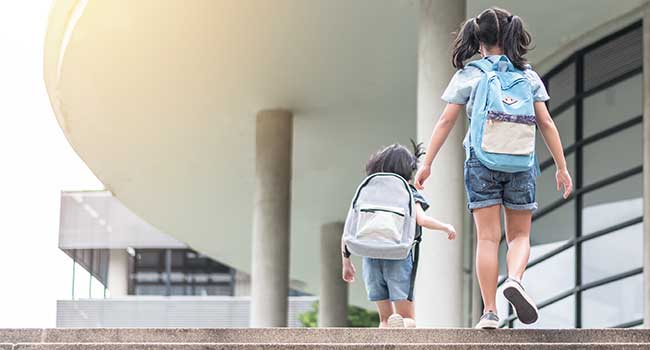
Austin School Districts Use Bond Funds to Improve Safety
Bob Cervi, Austin ISD executive director of construction management and facilities, said the district is working with architects, engineers and district police to ensure the latest and greatest in safety is included in their new and renovated campuses.
- By Jessica Davis
- September 27, 2018
Three districts in Northwest Austin, Texas, are working to evaluate and improve the safety and security of their campuses. Austin, Pflugerville and Round Rock independent school districts are using taxpayer funds via bonds to make changes for the sake of their faculty and students’ safety.
Austin ISD is using part of its $1.05 billion bond, approved in 2017, to modernize 17 of its campuses. Bob Cervi, Austin ISD executive director of construction management and facilities, said the district is working with architects, engineers and district police to ensure the latest and greatest in safety is included in their new and renovated campuses. The team is working toward designs to improve safety and prevent emergencies, he said.
“We look at not just evil things like an active shooter, but also how can we protect students so they feel secure during the [average]school day,” Cervi said. “How we can mitigate bullying by changing the interior architecture so you don’t have blind spots or secluded areas where kids can get cornered.”
Cervi said one of their goals is to create single-entry points with security vestibules, requiring late students and visitors to check in with staff before entering the campus. The team is also working to reduce blind corners on campus and improve line of sight.
“People probably think that is just the opposite of what you’d want—a wide area where you could see everything—but it actually helps,” Cervi said. “It gives you that field of view to see if there is that issue coming your direction so you can react accordingly.”
Other funds will go toward AISD security, purchasing new police equipment, upgrading radio and dispatch, adding and upgrading video surveillance and adding new security systems.
Pflugerville ISD implemented most of its major security upgrades after its 2014 bond was passed, allocating $4.7 million for safety upgrades that included secure vestibules, Health and Safety Director Denise Kablaitis said.
Since her hiring last year, Kablaitis said she has worked to standardized PfISD’s safety drill procedures, including getting the district police department involved in lockdown drills.
“This gives an added presence and the officers can answer questions that staff have if this were a real situation,” she said. “We practice it as real as it can be but keep the mindset of a drill.”
PfISD has also implemented a new alert system app that allows parents and students to report threats and safety concerns anonymously online or through an app. Upgrades in the district’s upcoming November bond proposal include video surveillance, intrusion detection and fencing around campuses.
If Round Rock ISD’s $508.4 million bond is passed in November, at least $29.8 million of those funds will go toward campus security, including the addition of intercoms at secure entrance vestibules. The district has already added personnel to take charge of campus safety.
Mario De La Rosa was hired in 2016 as RRISD’s first director of safety and security, after which he had an independent safety audit conducted for all of the district’s campuses and facilities. The audit evaluated evacuation procedures, disaster plans, campus design and other concerns.
One of the recommendations to come from the audit was to create its own police force, and in June RRISD formed an exploratory task force to develop a proposal for such to give to the board of trustees to review by early December, RRISD’s Director of Communications Jenny LaCoste-Caputo said.
The district currently contracts school resource officers from the Austin Community College Police Department, the Williamson County Sheriff’s Office and the Round Rock Police Department. Though the SROs are employed by their respective law enforcement office, RRISD pays their salaries, she said.
“The police force will be an added cost because there’s some initial costs such as uniforms and vehicles, but it’s not from scratch,” she said. “It’s not Williamson County Sheriff’s Office paying the deputies’ salaries; we’re already absorbing that staff cost.”
About the Author
Jessica Davis is the Associate Content Editor for 1105 Media.